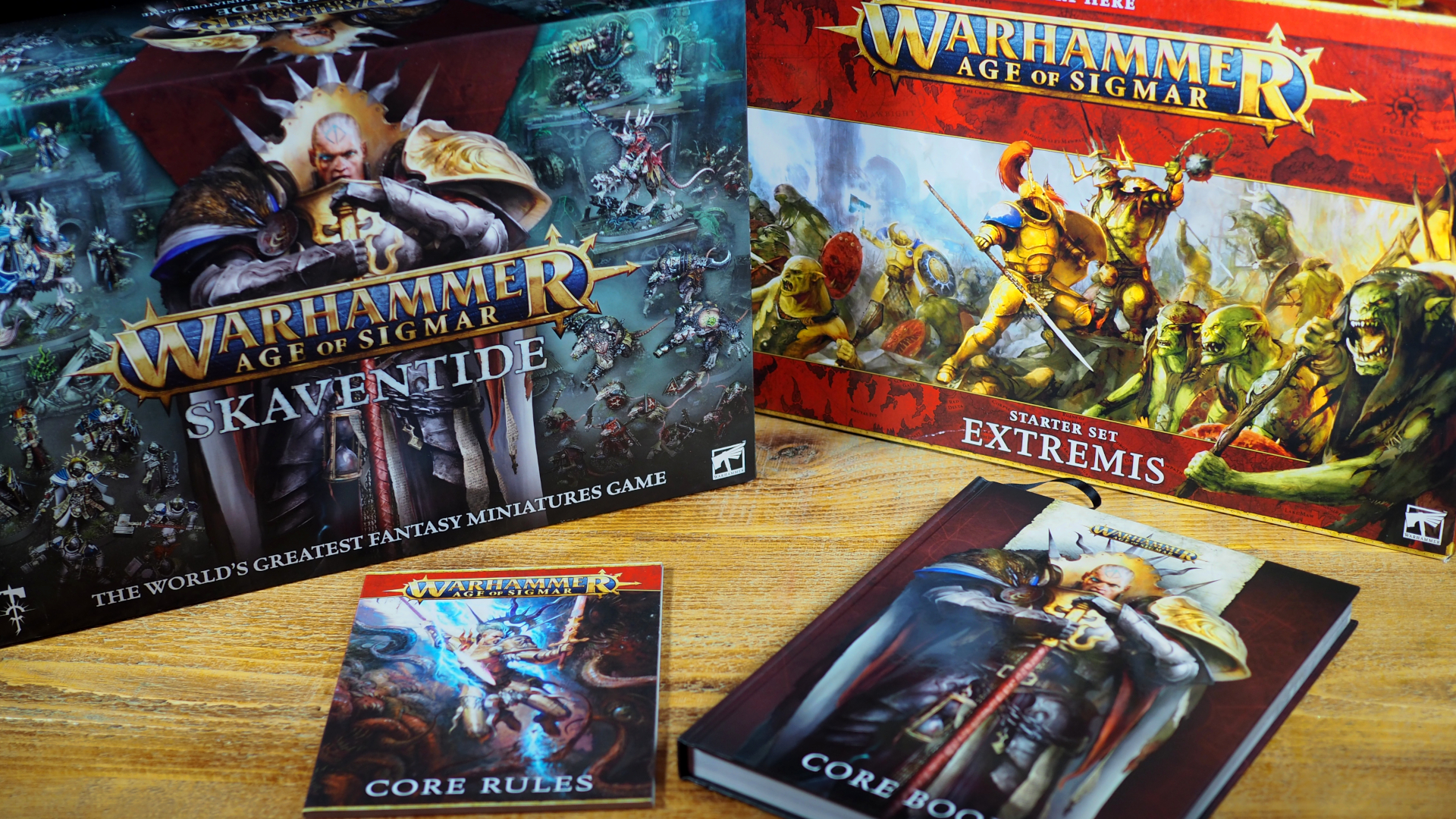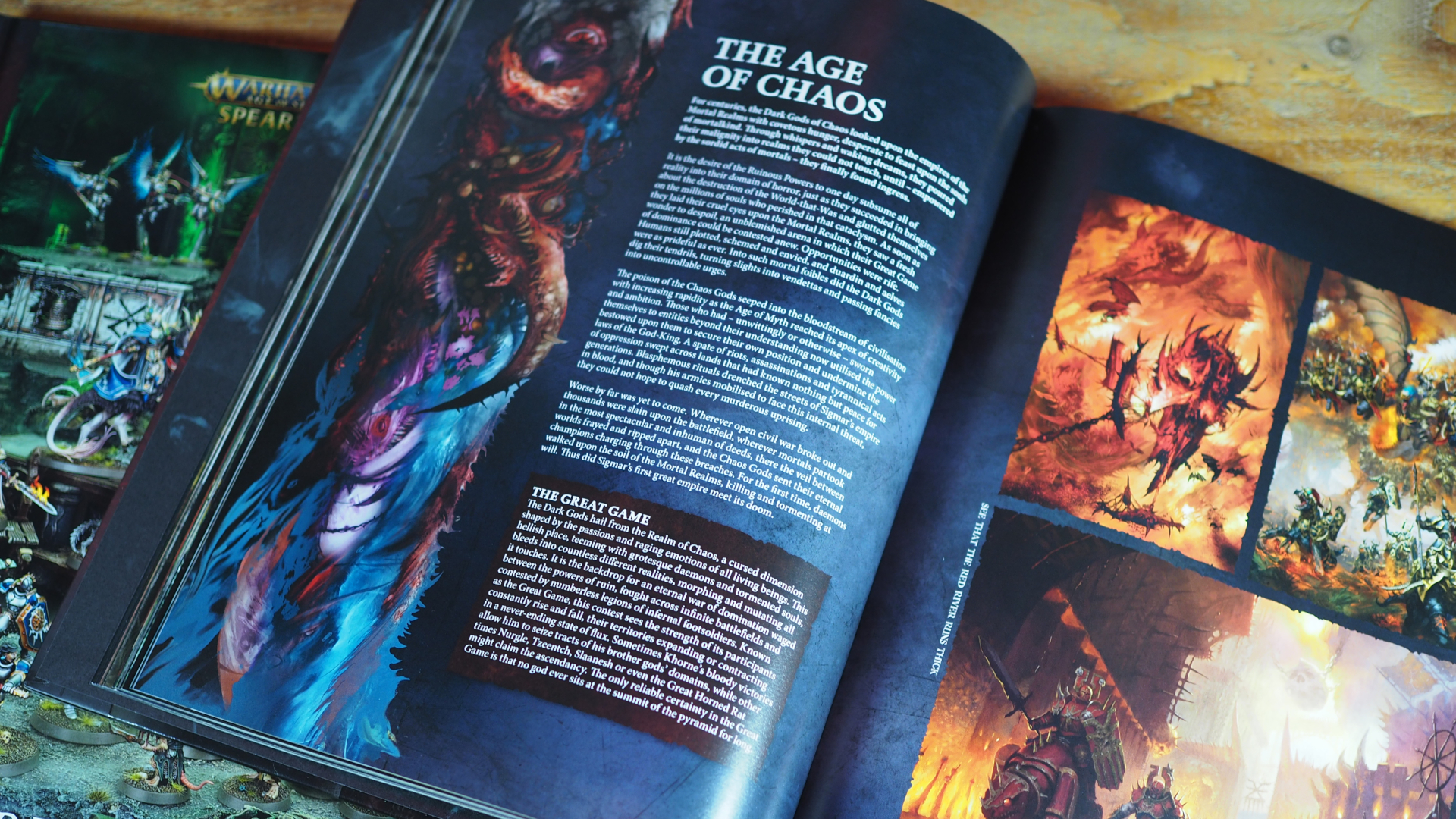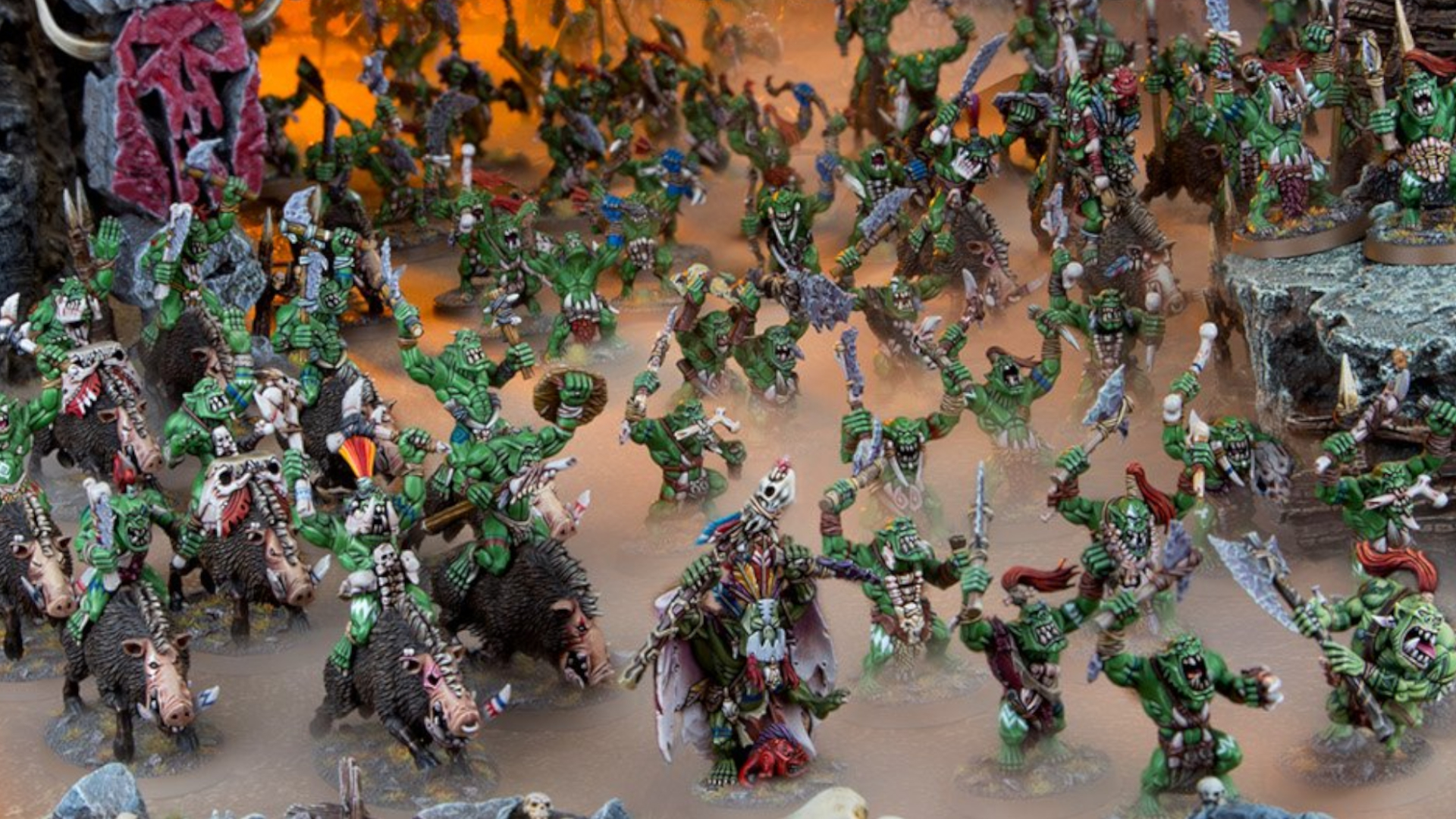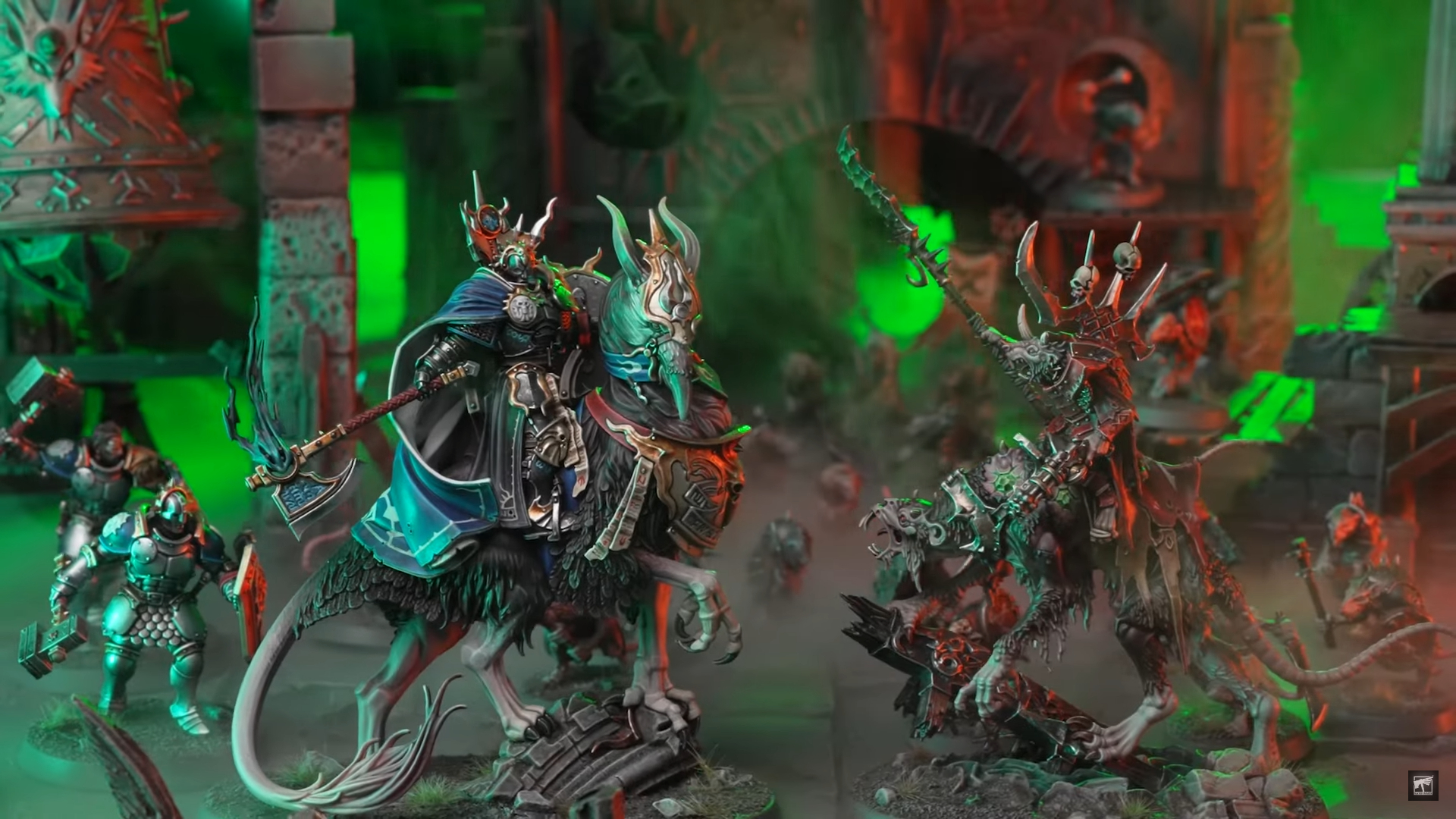All Warhammer Age of Sigmar 4th edition rules changes, compared
What's new?

Warhammer Age of Sigmar’s newest edition features several significant rule changes, most of which are designed to streamline gameplay without sacrificing strategy or depth. Changes to the popular fantasy warfare game by Games Workshop includes everything from how players build their armies to controlling objectives and scoring victory points. As with so many of the best board games these days, the majority of changes are made with an eye towards simplifying the rules, mostly by better defining various abilities and when they can be activated.
Every edition of Warhammer Age of Sigmar has featured a new ruleset, although the underlying core gameplay typically remains unchanged. Players battle for control of set objectives on the battlefield while also maneuvering other units to complete Battle Tactics (basically, the game’s equivalent to side quests) to score bonus points. Unless specified by a Battle Tactic, players don’t actually score Victory Points for killing an opponent’s models, so the game is a bit more nuanced than simply pushing miniatures into each other and chucking handfuls of dice to see the results of a fight.
When talking about any “new edition” of a Warhammer game, it’s important to note that there will always be crossover with the older edition. Most of the models still remain relevant, as does the core attack mechanic (players rolling pools of dice to determine the results of dice) and the need to measure specific distances a unit can travel on a turn. However, every new edition tends to take a different approach on the fiddly bits, things like how to place a unit and when certain effects are activated.
Reorganizing the War Between Order and Chaos (and Destruction and Death)

In the case of Age of Sigmar’s 4th edition, game designers reorganized the rules into a modular system, with different game modes using different combinations of rule modules. Every game mode uses the Core Rules, but other modes use more complicated combinations of rules. There’s a sort of future-proofing here for game designers, so they can introduce new game modes in the future without needing to print a full rulebook – players simply need to add whatever rules module they need to the Core Rules. More importantly, the modular ruleset means that players won’t need to learn as many rules to understand how to play the entry-level Spearhead mode, which in turn makes onboarding new players a bit easier.
Continuing with the reorganization theme, perhaps the biggest change to Warhammer Age of Sigmar is that almost every action, from moving to fighting to casting spells, is reclassified as an Ability. While it may seem like a subtle change, the game’s Ability system provides a more consistent framework on when Abilities can be activated and what a player has to do to trigger an ability.

Not every model, unit, and faction is making the transition to Age of Sigmar 4th Edition. While outdated Skaven and Stormcast miniatures being phased out is no surprise, the Beasts of Chaos and Bonesplitterz factions are also getting retired. However, even though they'll no longer be competitive legal in 2025, there will still be free digital rules available for all of the above should you choose to play them casually.
As a part of this overhaul, players also have a bit more freedom on what order they complete certain actions. If a player has multiple units with abilities that trigger during a certain phase, they can complete those abilities in whatever order they’d like. Functionally, the game’s new Ability system makes it easier than ever for players to know when to activate their unit’s abilities instead of trying to remember a more complicated ruleset or how certain subsystems interact with each other.
Another key change in Warhammer: Age of Sigmar is an overhaul and simplification of how players determine who has control of an objective. Previously, the game determined that a player controlled an objective if they had the most models within 6 inches of that objective, with certain kinds of models counting as “multiple” models based on their type. Now, every unit has a Control score that is added with other units within range of an objective and the army with the highest Control score is in control of that objective. Additionally, a unit typically needs to be within attack range of an objective to potentially be in control of it, effectively forcing units to get closer to objectives. To put it mildly, control scores make scoring points a lot simpler and speeds up the end-of-round scoring system significantly.
Sign up to the GamesRadar+ Newsletter
Weekly digests, tales from the communities you love, and more
(Battle)shocking Rebalances and Removals

One thing Warhammer: Age of Sigmar has done away with is its battleshock subsystem. The game previously forced units that lost models to make a bravery test at the end of each round, with players potentially losing units if they failed the test. That entire system is gone now, although some units have abilities that weaken (or strengthen) their Control score if they lose units. Battleshock felt like a weird holdover from more traditional wargaming and didn’t make sense in a world full of undead skeletons and reincarnated, lightning-infused warriors. Removing battleshock not only takes away a system that usually threw salt into the wound of a wounded unit, it also got rid of another gameplay phase to help streamline gameplay.
While the battleshock system is gone, an addition to the game is the “underdog,” a designation to the player who is currently losing in a match. Depending on what ruleset you’re using, the underdog gains different benefits ranging from an extra Command Point to choosing how a “twist card” impacts a round of Spearhead. The underdog system helps re-balance the game, letting the losing player have a fighting chance.
In terms of the advanced rules, both magic and terrain have received overhauls. Terrain now has a health value and can be attacked by enemy units, which means that players can take out pieces of terrain that provide helpful buffs to units. This could stymie some armies dependent on terrain for their strategy, but players still can’t throw units into terrain to destroy it as they can with Marvel: Crisis Protocol, another game where units interact and destroy the terrain.

Because the new Age of Sigmar edition is a top-to-bottom rewrite, the old army 'Battletome' books are going out of date. They'll be replaced with free rules at the launch of 4th Edition, and each faction will eventually receive a new Battletome.
Meanwhile, all of the various magic subsystems have been combined into one ruleset. Perhaps the biggest change with magic is that the game includes a number of Manifestations (spells that previously comprised Endless Spells and Invocations in past editions) that have statblocks and count as enemy units.
One other significant change is how armies are built. Players now organize their army into regiments, with a player’s army consisting of up to five regiments. Beyond these regiments, players can pad out their army using auxiliary units, but the player who has the least amount of auxiliary units also gets a bonus, which incentivizes players to stick with smaller and more focused armies. This new system also eliminates the Allies system, which allowed players to bring over units from other armies as part of army construction.
There are numerous other smaller changes in Warhammer: Age of Sigmar, all of which are aimed at making the game more streamlined and easier to play. The key to understand is that while veteran players will need to re-learn the cadence of gameplay, they should transition rather quickly. Almost everything that was cut or changed largely makes sense, and there’s no change that really hamstrings a particular army or eliminates a preferred style of play. Plus, the game is easier to learn than ever, which should help build the game’s playerbase and hopefully get more players addicted to an already fun gameplay experience.
For recommendations on what to play next, be sure to check out our guide to the best card games or the best tabletop RPGs.

Christian is an experienced freelance journalist who has been covering the tabletop gaming industry for years. He specializes in coverage of Dungeons & Dragons, the Pokemon Trading Card Game, and Warhammer.


